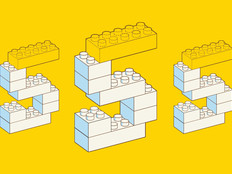Fact or Fallacy: What’s the Best Way to Improve Campus Wi-Fi Performance?
Keeping Wi-Fi networks running smoothly is a priority for campus IT teams, and they are doing so in an increasingly complex environment.
From robots to rogue devices, let’s examine a few myths and realities related to performance, security and research, along with real-world examples from Boston College and the Georgia Institute of Technology.
SIGN UP: Get more news from the EdTech newsletter in your inbox every two weeks!
Fact: Wireless Site Surveys Are a Must
Updating your wireless site survey is critical to ensuring strong Wi-Fi signals, in part because improvements in Wi-Fi technology tend to change utilization of the radio spectrum.
Deploying access points without such a survey can lead to unnecessary costs (if overprovisioning occurs) or unsatisfactory performance (if staff deploy too few APs or place them in unsuitable locations).
It is well worth the expense to employ a professional to conduct a survey before you kick off your Wi-Fi upgrade.
Fallacy: Insufficient Bandwidth Is Usually Behind Connectivity Issues
To be sure, an overtaxed network is often the reason for poor Wi-Fi, but not always. Sometimes the culprit is the one you least suspect.
At Boston College, Senior Network Systems Engineer Brian David had a case in which the physical space was the problem. A faculty member lost connectivity frequently, with a strong signal one minute and a total disconnection the next.
David was troubleshooting the issue when he noticed that each time a disconnection occurred, the nearby elevator bell rang. Mystery solved: The elevator shaft was located between the faculty member’s office and the AP, so every time the elevator stopped at the instructor’s floor, it completely blocked the signal.
David encountered similar issues in a classroom equipped with a sliding chalkboard. Whenever the instructor slid the chalkboard up, students lost the signal. In both cases, moving APs was an easy fix.
Fallacy: Wi-Fi Networks Don’t Need Special Attention
In addition to the usual attacks on wired networks, Wi-Fi networks are subject to unique avenues of attack. Due to their nature, Wi-Fi networks lack some of the inherent protections that wired networks enjoy.
In the wired world, for example, intercepting or inserting malicious traffic involves hands-on access to cables or switches. Not so in a wireless environment, where all an attacker needs is a smartphone.
Rogue APs can impersonate legitimate networks with a goal of stealing connection credentials from authorized users. A distributed denial of service attack can overwhelm captive portals.
There is a silver lining, however. These types of attacks all require a physical presence in an area served by the target Wi-Fi network. This limits the threat, and tools designed to detect suspicious Wi-Fi behavior can minimize it even further.
Fact: Rogue Devices Can Reduce Wi-Fi Performance
In essence, the radio frequency spectrum that Wi-Fi networks use is finite. There’s only so much bandwidth in a given area. It’s similar to trying to have a conversation with a lot of people in the room: If everyone talks at once, communication is difficult.
Wi-Fi acts in much the same manner. It uses radio frequencies that do not require Federal Communications Commission broadcast licenses.
These frequencies are commonly used by other technologies, too, including rogue devices (think old wireless phones, lighting and door control systems, microwave ovens and even car alarms). Any device that doesn’t cooperate can cause interference and degrade performance for both the rogue and official networks.
Fact: Researchers Want to Use Wi-Fi in New and Unexpected Ways
Research universities add another dimension, as researchers often find innovative ways to push the limits of wireless networks. If IT is not engaged, this can result in deployment of rogue devices.
Matt Sanders, Georgia Tech’s wireless services manager and the director of research operations in the Institute for People and Technology, shares insight into supporting research that uses production wireless networks.
“We do our best to run a network that works for everyone, but researchers and entrepreneurs test us and give an important opportunity to understand how the service needs to evolve to meet future needs,” he says.
For example, Sanders’s team worked with researchers developing the Robotarium, a research project that lets them experiment remotely on a fleet of hundreds of small robots in a 12-foot-by-14-foot arena.
From a networking perspective, Sanders says, the collaboration was valuable. “Their research involves hundreds of moving devices using a limited number of Wi-Fi frequencies in a very small space, which is an opportunity for poor performance in the lab and surrounding areas.”
To meet the needs of the Robotarium, the team used a variation of its high-density wireless solution for classrooms that included directional antennas on multiple APs and an optimized channel and power plan.
The solution eliminated the need to introduce a competing wireless network, and that reduced the lab’s impact on neighboring wireless users.
The wireless team also analyzed network flows and spectrum utilization, making it possible for researchers to optimize robot configuration and communication to reduce power requirements, scale to greater sensor data payloads and support even larger numbers of robots.
Fact: The Pace of Change Is Accelerating
Most IT administrators constantly seek to refine existing skills and add new ones, and there is ample opportunity to do so today. To that end, it is useful to consult with peers to see what challenges they’re facing and what’s coming down the pike.
One easy way to do so is through surveys such as the annual State of ResNet Report from the Association for College and University Technology Advancement and the Association of College and University Housing Officers-International, which gathers data from 320 institutions.
The 2017 survey added new categories to watch, such as wearables, fitness trackers and drones — all signs of the growing Internet of Things, which will tax campus Wi-Fi even further. Tapping into such research helps IT staff anticipate risks, deploy mitigating strategies and keep networks performing well.








